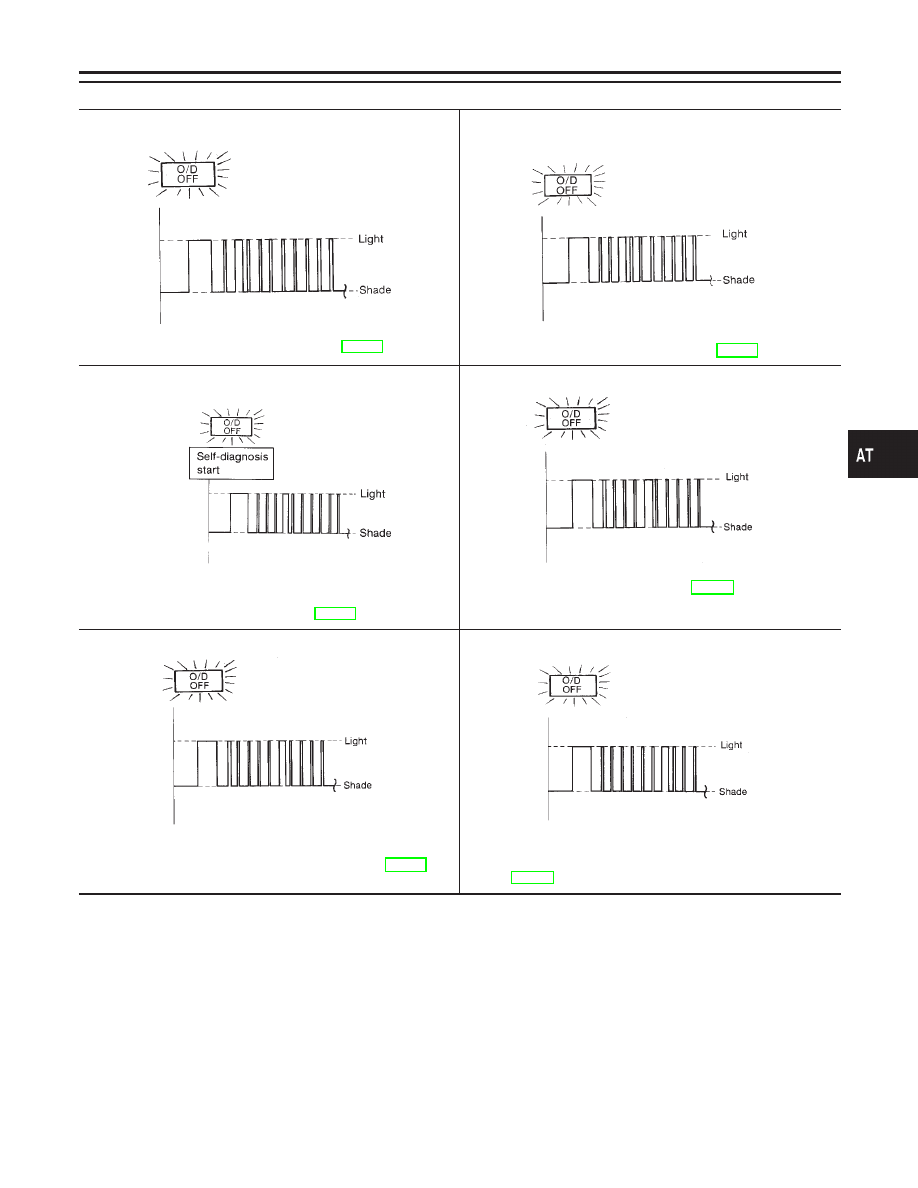Infiniti I30 (A33). Manual - part 14

O/D OFF indicator lamp:
2nd judgement flicker is longer than others.
SAT439F
Vehicle speed sensor circuit is short-circuited or disconnected.
⇒
Go to VEHICLE SPEED SENSOR·MTR, AT-203.
3rd judgement flicker is longer than others.
SAT441F
Throttle position sensor circuit is short-circuited or disconnected.
⇒
Go to THROTTLE POSITION SENSOR, AT-182.
4th judgement flicker is longer than others.
SAT443F
Shift solenoid valve A circuit is short-circuited or disconnected.
⇒
Go to SHIFT SOLENOID VALVE A, AT-172.
5th judgement flicker is longer than others.
SAT445F
Shift solenoid valve B circuit is short-circuited or disconnected.
⇒
Go to SHIFT SOLENOID VALVE B, AT-177.
6th judgement flicker is longer than others.
SAT447F
Overrun clutch solenoid valve circuit is short-circuited or discon-
nected.
⇒
Go to OVERRUN CLUTCH SOLENOID VALVE, AT-191.
7th judgement flicker is longer than others.
SAT449F
Torque converter clutch solenoid valve circuit is short-circuited
or disconnected.
⇒
Go to TORQUE CONVERTER CLUTCH SOLENOID
VALVE, AT-151.
GI
MA
EM
LC
EC
FE
AX
SU
BR
ST
RS
BT
HA
SC
EL
IDX
ON BOARD DIAGNOSTIC SYSTEM DESCRIPTION
Diagnostic Procedure Without CONSULT-II (Cont’d)
AT-53